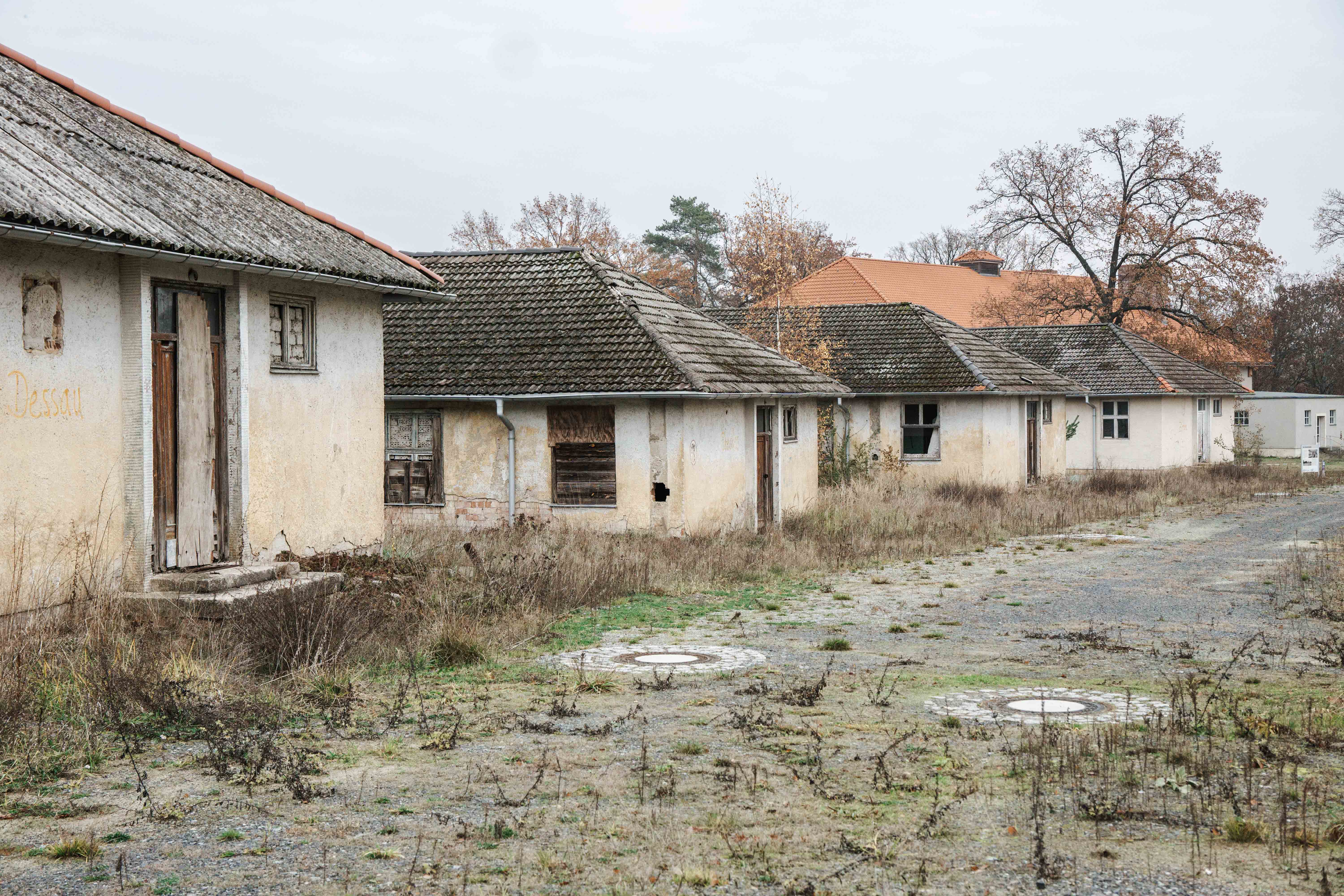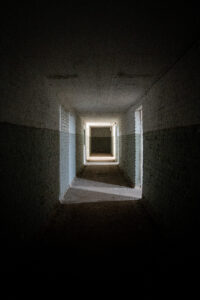Berlin’s Abandoned Olympic Village

Berlin’s Abandoned Olympic Village
Germany were originally awarded the 1916 Olympic Games, an event cancelled due to WW1. Fast forward to 1931 and Germany again won the rights, this time to host the 1936 games. Arch-propagandist Joseph Goebbels recognised an opportunity for some positive international optics, and the decision to build a village for the Olympic athletes was born. The site just west of Berlin was a former Truppenubungsplatz, a military training camp. Architects HC Steinmetz and brothers Walter and Werner March were commissioned to design the quarters for just under 1200 global Olympians. The landscape was created by Heinrich Weipking-Jurgensman.
The village included housing for the athletes, a reception, swimming pools, sports halls and a vast, state of the art, restaurant. There was also the Hindenburghaus, a complex with theatre, training rooms, hairdressers and more.
The games themselves were thrown into jeopardy a couple of months before they started, with boycotts threatened amidst the spectre of international military action. Germany had contravened the Locarno Treaty, moving Wehrmacht troops into the demilitarised Rhineland. The games went ahead despite rising tensions, as the world looked on at flagrant antisemitism and discrimination against Gypsies.
Germany’s favourite sporting son, Max Schmeling, had been pressured by the Nazi party to split up from his Czech wife, and to part ways with his Jewish-American boxing manager Joe Jacobs. Schmeling refused but was still used as a symbol of Aryan might, especially after he defeated black-American Joe Louis for the World Championship just before the games were held. The US were close to a full boycott of the Games as a result. As fate would have it, the Olympian with the most gold around their neck at this Games would be black-American Jesse Owens who, much to the chagrin of the Nazi party, claimed 4 1st place medals. The semi-circular road that surrounds the old Olympic village restaurant today is known as Jesse-Owens-Ring.
Wolfgang Furstner was the Wehrmacht commander installed to oversee the building of the Olympic village, and was subsequently made part of the Games’ official organising committee. The village opened its doors to the public for 6 weeks from 1st of May 1936, and was overrun, with some damages caused by the 360,000 visitors. Furstner was blamed, and later relieved of his duties. Meanwhile rumours of his Jewish heritage were doing the rounds, and it looked like his days as a ranking officer were numbered. His wife was apparently seeking a divorce, and three days after the Games, Furstner shot and killed himself by the pond behind his quarters in the village.
Upon the conclusion of the 1936 Olympics, the idea was for the village to be used for housing, not unlike the London East village that created 2500 homes in the wake of the 2012 Olympics. Things were different in Germany, though, as the site ended up converting into military barracks for the Wehrmarkt soldiers. The buildings would later double as a military hospital.
After WW2, many Russian soldiers and their families moved in, making this their home until the fall of the Berlin Wall. What you find at the Olympic village today is a ghost town of the once prestigious athletes quarters, decaying German army barracks and empty Russian plattenbau tenements.
How’s it looking now?
Accessing the village these days isn’t strictly speaking legal, but the only resistance you’ll find there is a few disinterested workmen. The fact that you’ve got to ‘sneak’ in to certain parts only makes it more thrilling, especially around the area of the former Reichswehr army barracks. Old spotlights loom overhead, and as you roam from building to building you feel like a misbehaving soldier scurrying around the camp after lights out.

Coming from the train station (Elstal) the abandoned Russian tenements are the first real point of interest you’ll encounter, row after row of hollowed out Plattenbau structures. Upon close inspection you can see that these were once lived in, as some remnants of their inhabitants remain, mostly colourful wall paint and drawings. They’ve been abandoned since around the fall of the Berlin wall, and are now creepy, echoing shells, complete with crumbling walls and dripping ceilings. The basement level is probably best explored with a partner and a reliable torch, it’s pitch-black and void of sound.
After pushing gently on the doors of the army quarters, you’ll find some of the old lodgings can still be explored. It’s not really clear weather this is by design, or perhaps the previous group generously left the entrances open. Inside these houses you’ll meet shattered windows, loose pipes, and the odd nail on the floor, so best to move slowly and with a pair of thick boots. There are some rather nerve-wracking rooms to discover, using hatches in the floor that lead to the undisturbed levels underground. Again, better with a buddy and lots of light. There’re ancient Cyrillic newspapers plastered to the walls, perhaps once makeshift insulation for the soldiers that lived there.
The state-of-the-art restaurant complex is still standing and looking much unchanged – but now it’s housing and a small museum. This is ostensibly where a tour of the village can be booked, although how to go about it is anybody’s guess. You’ll the find the remains of the swimming hall pretty easy to access, and clearly people have climbed up into the rafters to peak up there too.
The one part that remains largely unexplored is the athletes housing, probably because to break in to this section you’re in plain view of the people who live here now.
